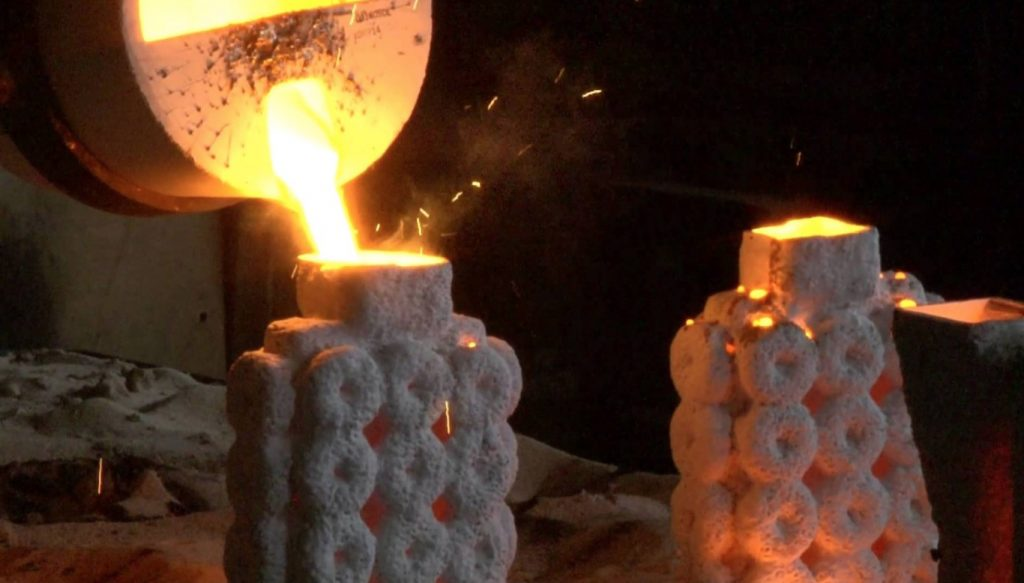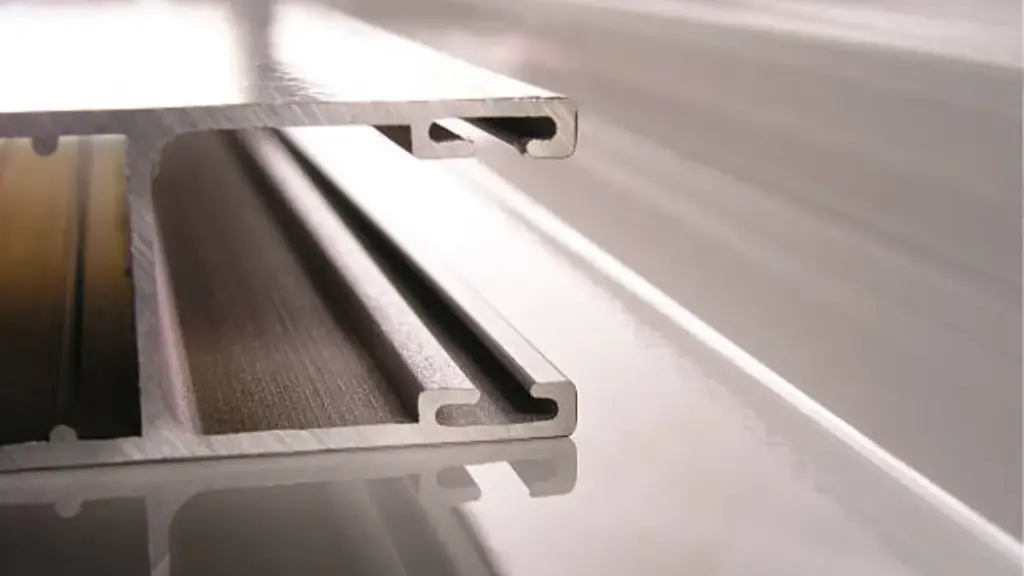Когда дело доходит до производства металлических деталей, Два наиболее часто используемых процесса — это литье под давлением и литье по выплавляемым моделям.. Оба метода имеют свои преимущества и недостатки., поэтому важно понять различия между ними, прежде чем решить, какой процесс лучше всего подходит для конкретного проекта..
Что такое литье под давлением?

Литье под давлением это производственный процесс, который включает в себя нагнетание расплавленного металла в полость формы под высоким давлением.. Металл быстро затвердевает, создание точной и качественной детали. Этот процесс идеально подходит для производства большого количества деталей с постоянным качеством и чистотой поверхности..
Что такое процесс литья под давлением?
The процесс литья под давлением начинается с плавления металла, обычно алюминий, цинк, или магний, в печи. Затем расплавленный металл впрыскивается в полость стальной формы с помощью машины высокого давления.. Когда металл остынет и затвердеет, форма открыта, и готовая деталь выбрасывается.
Преимущества и недостатки литья под давлением

Преимущества литья под давлением
- Экономичность при больших объемах производства: Литье под давлением — это эффективный процесс быстрого и экономичного производства больших объемов деталей..
- Постоянное качество и качество поверхности: В результате литья под давлением получаются детали одинаковых размеров и гладких поверхностей., что делает его идеальным выбором для применений, требующих точности.
- Быстрое производство крупных заказов: Литье под давлением известно своей эффективностью при быстром производстве больших объемов деталей.. Такие быстрые производственные возможности особенно выгодны для компаний, стремящихся выполнять крупные заказы в сжатые сроки..
- Сложные формы и замысловатые конструкции: Литье под давлением позволяет создавать детали сложной конструкции и сложной формы, которые может быть сложно получить с помощью других производственных процессов.. Эта универсальность делает литье под давлением подходящим для широкого спектра применений в различных отраслях промышленности..
- Жесткие допуски на размеры: Литье под давлением обеспечивает высокую точность и жесткие допуски на размеры., обеспечение соответствия деталей строгим стандартам качества. Этот уровень точности необходим для отраслей, где точность машиностроения имеет решающее значение..
- Широкий выбор вариантов отделки: Литье под давлением позволяет наносить на детали различные виды отделки., включая живопись, порошковое покрытие, и покрытие. Такая универсальность вариантов отделки позволяет адаптировать и улучшить эстетику конечного продукта..
Ограничения литья под давлением
- Ограниченные варианты материалов: Литье под давлением обычно ограничивается цветными металлами, такими как алюминий., цинк, и магний, ограничение спектра материалов, которые можно использовать.
- Высокие первоначальные затраты на оснастку: Формы, используемые при литье под давлением, могут быть дорогими в изготовлении., что делает его менее экономичным для небольших производственных партий.
Что такое литье по выплавляемым моделям?

Литье по выплавляемым моделям, также известное как литье по выплавляемым моделям, это производственный процесс, в котором используется восковая модель для создания сложных металлических деталей.. Этот процесс идеально подходит для изготовления сложных форм с мелкими деталями и широко используется в таких отраслях, как ювелирная и аэрокосмическая промышленность..
Что такое процесс литья по выплавляемым моделям?
Процесс литья по выплавляемым моделям начинается с создания восковой модели отливаемой детали.. Восковой образец покрыт керамической оболочкой и нагревается для удаления воска., оставив после себя полую керамическую форму. Затем расплавленный металл заливают в форму., заполнение полости и формирование окончательной детали после остывания и затвердевания металла..
Преимущества и недостатки литья по выплавляемым моделям
Преимущества литья по выплавляемым моделям
- Подходит для сложных и детализированных деталей.: Литье по выплавляемым моделям позволяет производить сложные детали с мелкими деталями, которые может быть сложно достичь с помощью других производственных процессов..
- Можно использовать широкий спектр материалов: Литье по выплавляемым моделям поддерживает различные металлы., включая нержавеющую сталь, алюминий, и титан, обеспечение гибкости в выборе материала.
- Снижение затрат на механическую обработку и оснастку.: Литье по выплавляемым моделям часто требует минимальных требований к механической обработке и инструментам., поскольку детали производятся по форме, близкой к чистой. Такое сокращение вторичных операций снижает общие производственные затраты и повышает эффективность производственного процесса..
- Гибкость дизайна: Литье по выплавляемым моделям обеспечивает гибкость конструкции, позволяющий изготавливать детали сложной геометрии и уникальных форм.. Такая свобода проектирования позволяет производителям воплощать в жизнь инновационные концепции и удовлетворять конкретные требования клиентов с помощью индивидуальных решений..
- Превосходная прочность и долговечность: Компоненты, изготовленные методом литья по выплавляемым моделям, обладают превосходной прочностью и долговечностью., что делает их подходящими для приложений, требующих высокой производительности и надежности.. Прочность литых деталей обеспечивает долговечность и отказоустойчивость в сложных условиях эксплуатации..
Ограничения литья по выплавляемым моделям
- Более длительные сроки производства: Процесс литья по выплавляемым моделям может занять много времени., с несколькими этапами создания финальной части, что приводит к увеличению сроков выполнения.
- Более трудоемкий процесс: Литье по выплавляемым моделям требует квалифицированной рабочей силы для создания и сборки восковых моделей и керамических форм., добавление к общим производственным затратам.
Разница между литьем под давлением и литьем по выплавляемым моделям
Допуск и качество поверхности
- Литье под давлением обеспечивает более жесткие допуски и более гладкие поверхности благодаря высокому давлению, используемому в процессе..
- Инвестиционное литье обеспечивает большую гибкость дизайна и более мелкие детали., что делает его подходящим для сложных и замысловатых деталей.
Соображения стоимости
- Литье под давлением более рентабельно при больших объемах производства., поскольку первоначальные затраты на оснастку можно распределить на большее количество деталей.
- Литье по выплавляемым моделям предпочтительнее для производства небольших объемов или деталей сложной геометрии, которые может быть трудно достичь другими методами..
Варианты материалов
- Литье под давлением обычно ограничивается цветными металлами, такими как алюминий и цинк., ограничение спектра материалов, которые можно использовать..
- Литье по выплавляемым моделям поддерживает широкий спектр металлов., включая нержавеющую сталь, алюминий, и титан, обеспечение большей гибкости в выборе материала.
Приложения
- Отрасли, которые получают выгоду от литья под давлением, включают: литье под давлением автомобильных деталей, аэрокосмический, и бытовая электроника, там, где важны большие объемы производства и точность.
- Отрасли, которые получают выгоду от литья по выплавляемым моделям, включают ювелирную промышленность., медицинское оборудование, и военное применение, где требуются сложные формы и мелкие детали.
Какой процесс подходит для вашего проекта?

При выборе между литьем под давлением и литьем по выплавляемым моделям для проекта, необходимо учитывать несколько факторов:
- Объем производства: Литье под давлением идеально подходит для крупносерийного производства., в то время как литье по выплавляемым моделям может быть более подходящим для производства с меньшими объемами.
- Сложность детали: Для сложных деталей с мелкими деталями, литье по выплавляемым моделям может быть лучшим вариантом, тогда как литье под давлением лучше подходит для более простой геометрии..
- Требования к материалам: Учитывайте свойства материала, необходимые для детали., поскольку литье под давлением и литье по выплавляемым моделям поддерживают различные диапазоны материалов.
Заключение
В заключение, как литье под давлением, так и литье по выплавляемым моделям предлагают уникальные преимущества и ограничения, которые делают их идеальными для конкретных применений.. Понимание различий между двумя процессами и учет таких факторов, как объем производства., сложность детали, и требования к материалам помогут вам определить, какой процесс лучше всего подходит для вашего проекта.. Требуется ли вам крупносерийное производство с жесткими допусками или сложные детали с мелкими деталями?, Выбор правильного метода литья может существенно повлиять на качество и эффективность вашего производственного процесса..


















